How Long Should Roof Heating Cables Be Left On?
Learn whether it’s ok to leave them on all year round or not
If you are a homeowner and you live in a snowy area, you definitely want to know how you can keep your roof free from snow during the coldest season of the year.
And since snow dams can cause many hazards to both your roof and the house itself, installing heating wires for roofs is often the best solution to this problem.
However, after you make this decision, you will most likely face another concern: when to turn on and off your roof heating cables?
Is it ok if you leave them up there all year round? And if you have never had to deal with this type of roof heating, you will definitely feel a bit frustrated.
So in this article, we are going to explain how long a roof heating wire should stay on your roof, and why actually the ice and snow dams must be removed. Also, you are going to learn how much it might cost you to install such roof heating cables.
We will explain whether or not it is mandatory to remove your heating wires in spring, and what type of cable would be the most suitable for you.
How Long Can You Leave Ice Dam Heating Cables Turned On?
If you live in an area that has snowy winters, and you own a house, you know very well that ice dams can cause quite a lot of damage to a house.
In particular, excessive snow and ice buildup may lead to destroying the paint and causing various structural complications with the roof, walls, and ceilings.
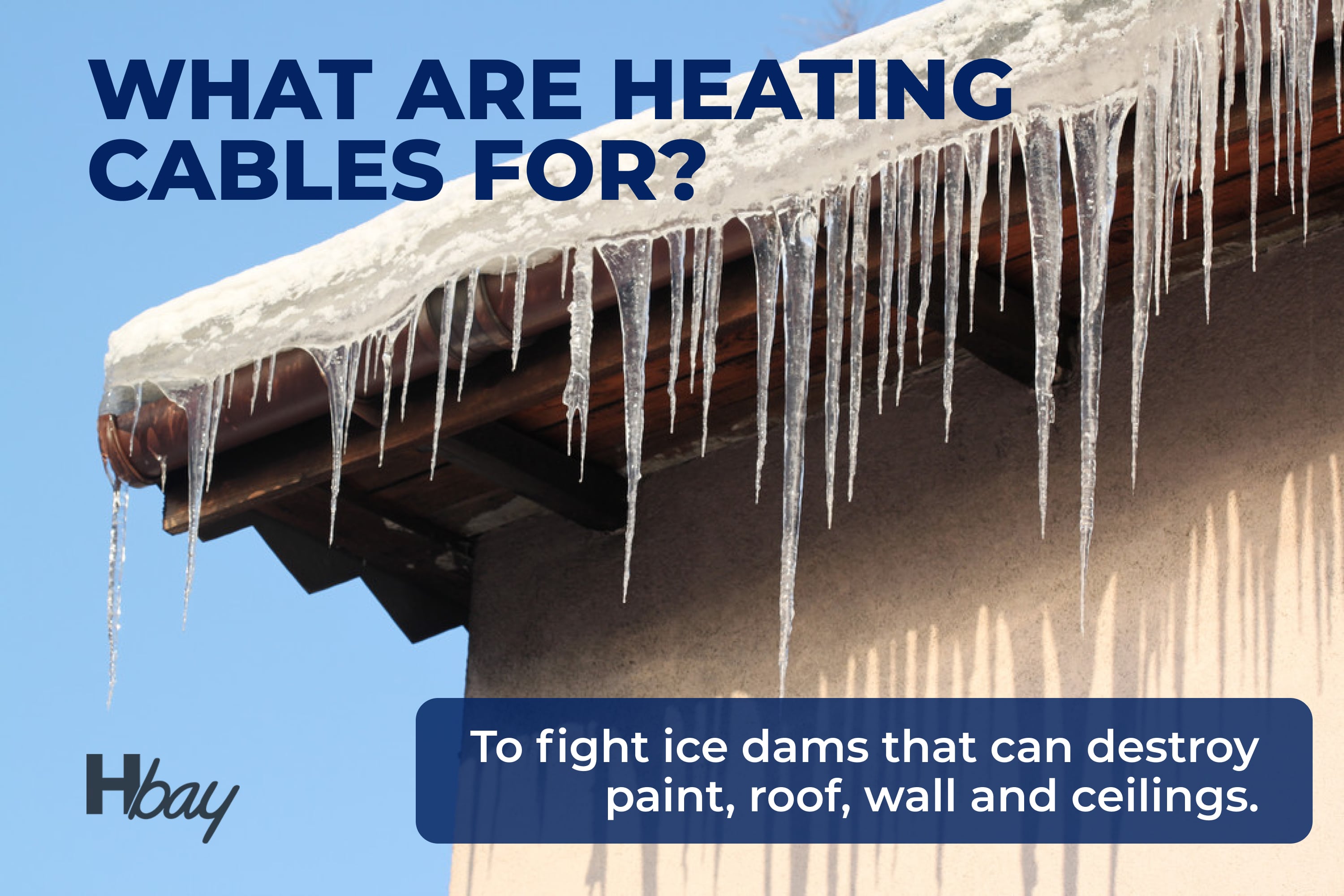
housekeepingbay.com
For sure, as a prudent homeowner, you will want to struggle to deal with ice dams! And one of the greatest investments you can make is to get roof heating cables.
You will notice that once these are installed on your roof, all your problems with ice dams, as well as with snow will go away.
Of course, you might be wondering how much time these cables should spend on your roof for the best results.

In general, roof heating cables can be left on the roof all year long. Also, you can keep them turned on for as long as you want during the winter, as long as you do not mind paying the electrical bills somewhat extra in comparison to your normal costs.
However, we would recommend turning the roof heating cables on only when you need to use them. The best thing you can do in this case is to turn on the roof heating wires a couple of hours before the snow forecast in your region.
You can then turn them off once all the snow and ice have melted off the roof. Like this, you will not be spending extra electricity and thus your electricity bills will not rise up much.
By the way, even though you can do this turn-on and off stuff manually, you can always get snow sensors that are available on the market. They will make your work much easier (especially if you need to turn the cables on when the weather is not the best outside!).

dovapi via VistaCreate
Table of Contents
What Kind Of Heating Cable Is the Best For You?
Once you decide that you do need to install roof heating wires, you might face another complication: what sort of cable is it best to purchase for this purpose?
Most of the roof heating cables that can be found in the market are made for asphalt roofs. This nuance is best to be taken into consideration since it means that, in case you have a metal roof, you will have to make sure that you find specific cables used for this particular type of roof and roofing material.
Otherwise, you will most likely damage the surface of the roof with the wrong type of cable installed.
As for the metal roof, for example, roof heating cables use special mini clamps in order to attach the wire to the metal surface of the roof. These clamps are then fastened tightly to the nail strips that are located on the metal roof.
If you compare this wire attachment method to the one that is used for asphalt roofs, you will see that it differs pretty much. The major distinction is that the metal roof clips are different from the clips that asphalt roofs use.
If you choose to buy the raw materials for the heating cable yourself, you must make sure that you do not pick up the wrong clips!

dovapi via VistaCreate
How Roof Heating Cables Should Be Installed?
We want to warn you at once: installing heating cables on your roof is a tricky task! Since you definitely want them to last as long as possible and serve you well, remaining effective, we would recommend hiring a professional to get the job done for you.
But of course, if you are knowledgeable and skilled in this sort of work, then feel free to do it on your own.
What is so difficult and tricky about installing the roof heating wires, you may wonder?
See, these cables need to be placed strategically and fastened properly.
An outdoor GFCI outlet will also be used, and you can tell your electrician to bring one if you do not have it at your disposal at home.
Moreover, before installing the roof heating cables, it is essential to take the size and shape of the roof into consideration. In addition, to make sure that your snow and ice heating roof wires will be properly functioning, you must pay close attention to such external factors as the direction of the wind and sun.
Typically, only a professional installer will be able to tell you whether the cables have been installed properly or not.
So even if you managed to do the job yourself, you should still invite a professional to double-check everything just to make sure that things are done correctly and everything is working as it should be.
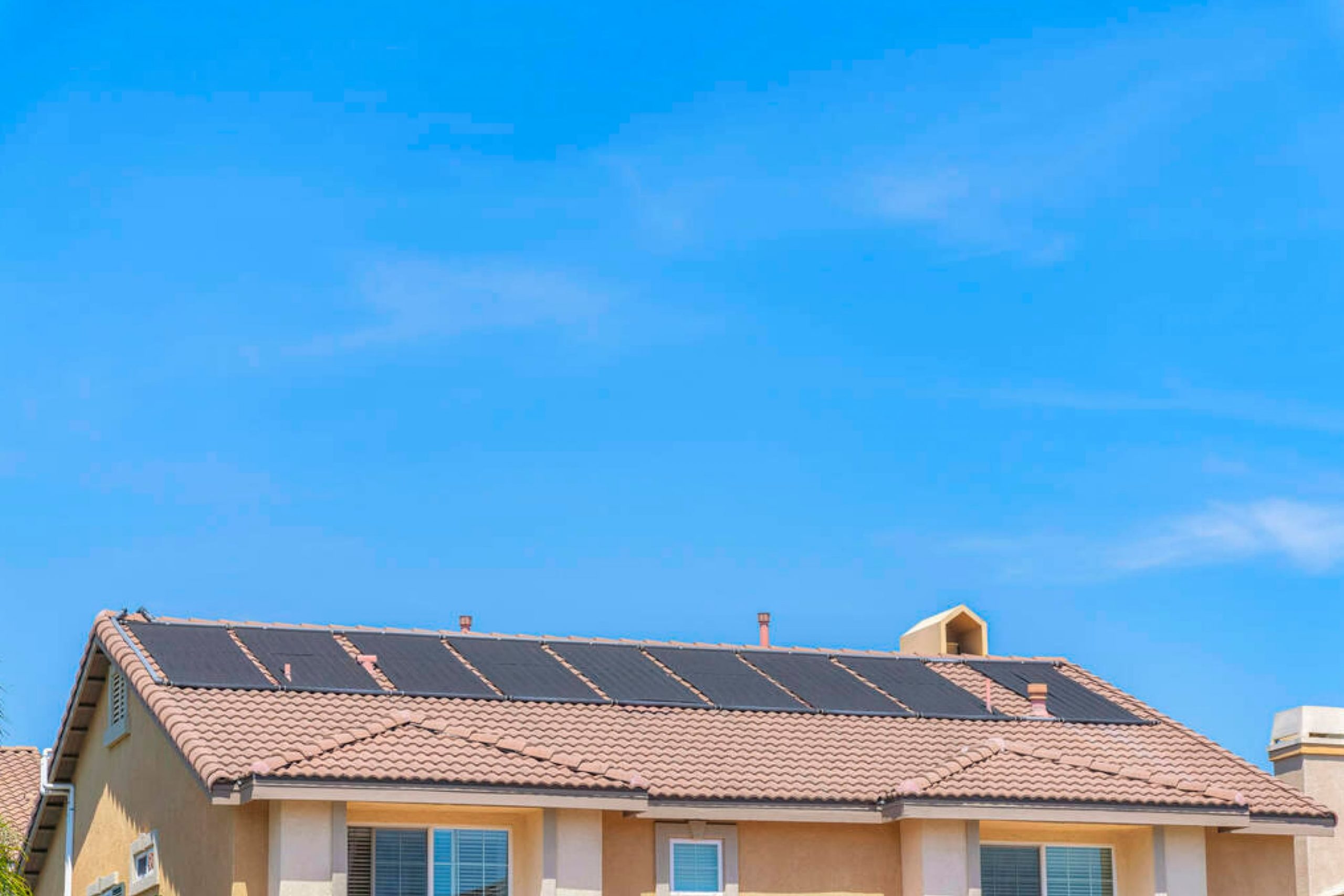
dropthepress via VistaCreate
What Installation Materials You Might Need
Whether you’re looking to install the deicing system yourself or you’re hiring a professional to do it for you, it’s a good idea to know the list of materials used for the project. Here’s everything that you may need for the job:
- Roof clips
- Control panels
- Power connection kits
- Downspout hangers
- Splice kits
- Fiberglass tape
- End seals
- Thermostats
- RTDs and other sensors

housekeepingbay.com
Before you begin your electric heating cable project, make sure you’ve gathered all the necessary supplies. If you’d like to replace your roof and add a heating system to it, please feel free to contact our team at Legacy Service. We’ll provide you with a free estimate.

HayDmitriy via VistaCreate
Do the Ice Dam Heating Cables Need to be Removed In Spring?
As we have already mentioned above, these cables are pretty versatile in terms of use. It is basically up to you whether to leave them on your roof or take them off when winter is away.
However, even though you can always remove these cables from the roof when spring comes, we would not recommend doing this. The main reason is that you will mess up the installation process.

Usually, cables are resilient in nature and use durable clips to stay in place. They are meant to stay put for decades, so if you tamper with them, you may have to pay the installation costs again.
So what we would recommend is leaving the roof heating cables on the roof all year round. This will cause no complications for you!
These cables do not require any maintenance, so you do not have to worry about them rotting with age or being exposed to any other similar sort of damage. All that needs to be done is to ensure that they are only turned on when needed so that you do not waste power or your money!
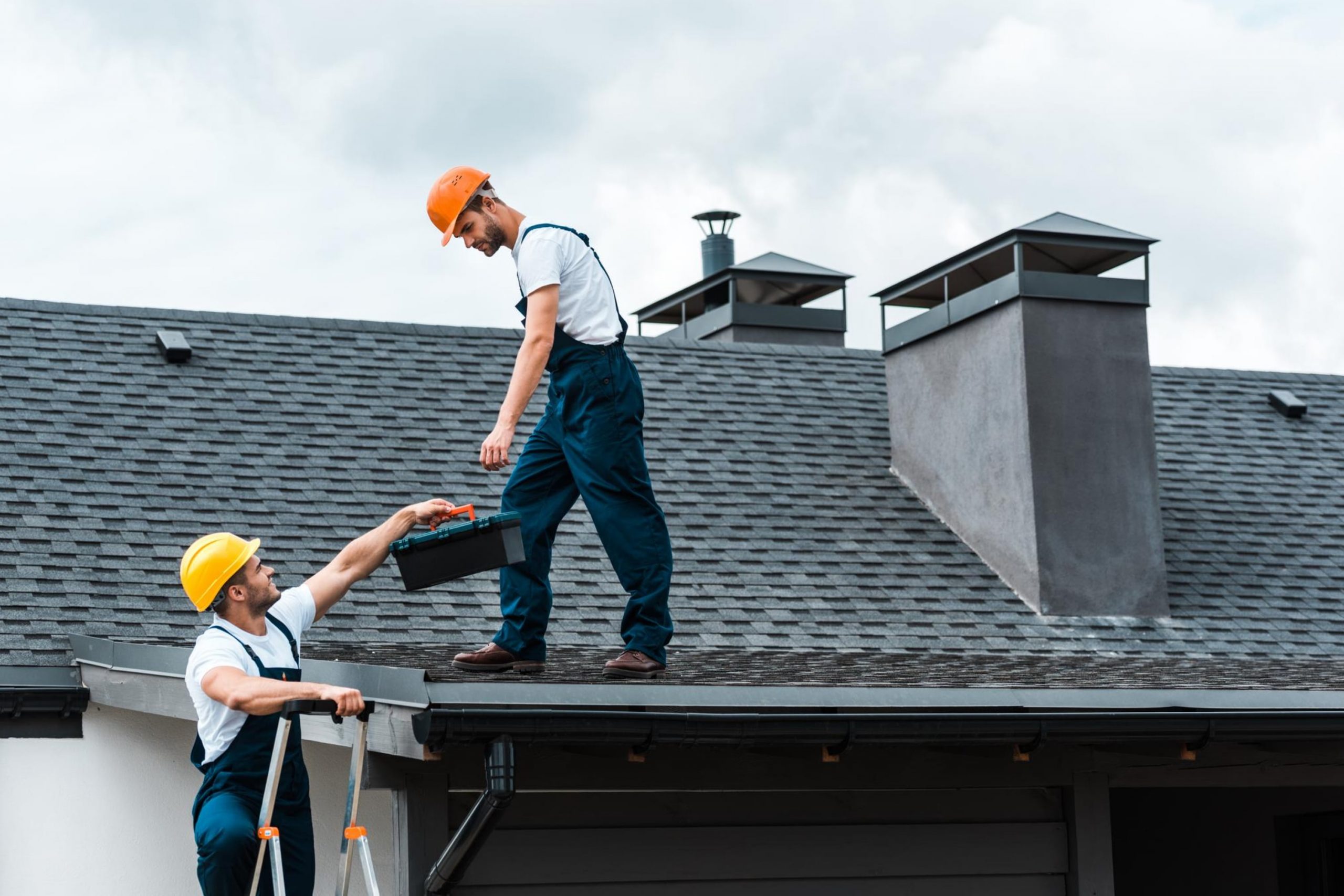
HayDmitriy via VistaCreate
How Much Does It Cost to Operate a Roof Heating Cable?
After you decide to install roof heating cables and figure out what type of wires you need in particular, you will definitely become concerned about the expected cost that should be spent in order to run roof heating cables.
To some of you, installing roof heating cables may seem like quite an investment because it will require raw materials, and the cost of installation itself is pretty significant.

housekeepingbay.com
However, once you get the installation phase done, you will only have to pay monthly costs that typically automatically get added to your electric bill.
As for the exact prices and costs, a roof that is around 150 feet long will utilize 330 feet of heating cable. The cables will use approximately 8 watts of power per foot. The rate of electricity is approximately 11 cents for one kilowatt per hour.
This means that if you have a cable of 290 feet that consumes 55 kWh every day, you will have to pay $6.5 for each day.
If the cables constantly run all month, this amounts to a total of $181.50.
This can be quite pricey, especially if you have to pay it every year. This is why it is best to use the system only when you need it, meaning for melting the snow and ice on your roof. And then turn it off until the next use.
Simply turn the roof heating cables on when snow or ice starts to accumulate on the roof. You can also invest in a snow sensor that will automatically turn the cables on when it snows. The heating cables can be heated up to 500 degrees Fahrenheit.
It will take approximately $500 to $600 for every 100 feet of cable installation. However, you can choose to purchase the materials from a local market yourself. This may help you save up some money. You can choose to only pay the price of the labor, especially if you are on a tight budget.
So, now you have a clearer understanding of how roof heating cables work and what they are used for at all. Also, now you know how long you can leave these cables on so that you don’t have to pay extremely high electricity bills.
And since we have also told you a lot of useful information regarding the roof heating wires installation and costs that might be spent on their use, we are sure that it will be easier for you to figure out what type of cables you might need, as well as how much money you might have spent on their installation.

JGade via VistaCreate
Ever wished paint sampling was as easy as sticking a sticker? Guess what? Now it is! Discover Samplize's unique Peel & Stick samples. Get started now and say goodbye to the old messy way!
Get paint samples




Frequently Asked Questions
⭐How long do roof heating cables last?
On average, roof heating cables last from three to five years. But if you keep them turned on all year round, they can last less.
⭐Can roof heating cables be used on tile roofs?
Yes, there are special types of heating cables that are designed for concrete tile roofs.
⭐Where to install roof heating cables?
Typically they are installed on the lowest edge of the roof that is called eave. But they can also be installed in other places. That is to be discussed with the installer.
3 thoughts on “How Long Should Roof Heating Cables Be Left On?”
Leave a Reply




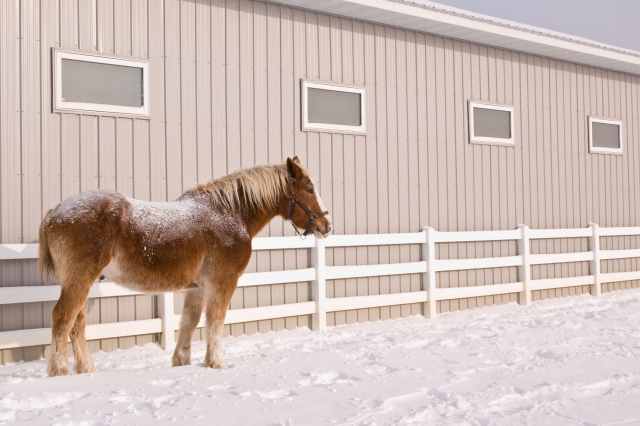
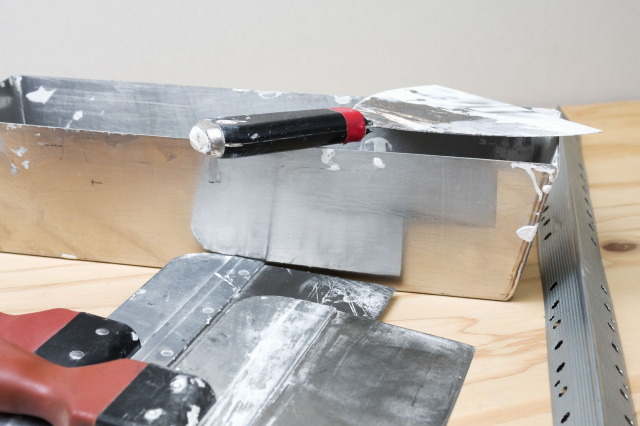


If anyone here uses or used heat tape, could you please tell me: does heat tape use a lot of electricity?
We have just installed roof heating tape, but it is our first experience with them. Does anyone know whether I can leave heat tape plugged in?
Hi there! Well, as far as I know, modern heat tape can remain plugged in if it has a built-in thermostat. And even though it remains plugged in, the tapes will not draw electricity all the time since the thermostat automatically turns off. So I guess you can leave it plugged in but only if your tape has a thermostat.